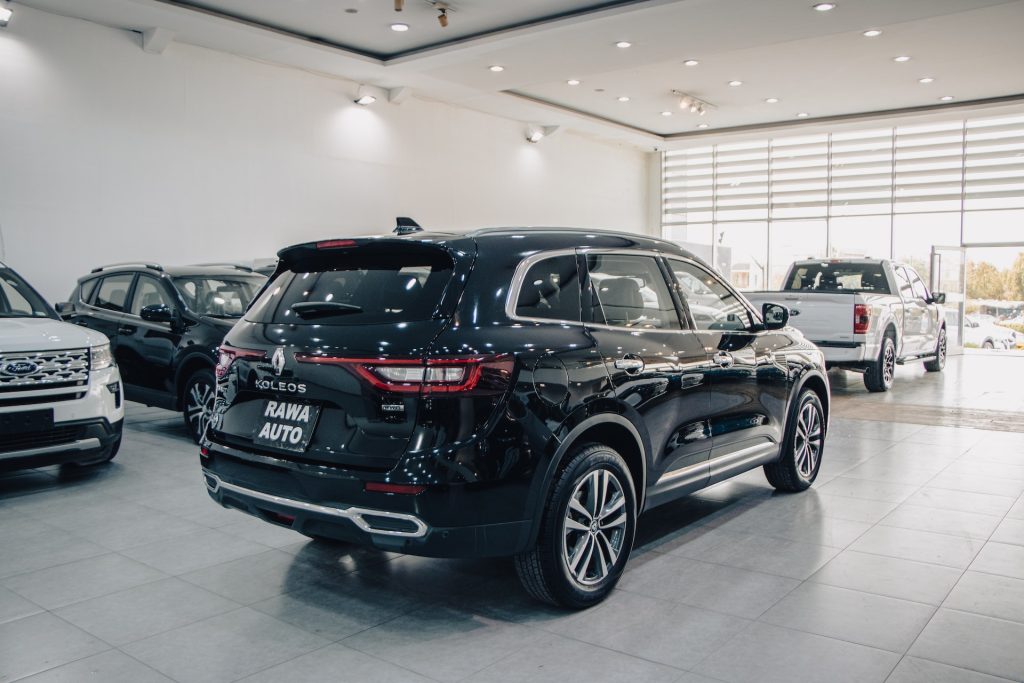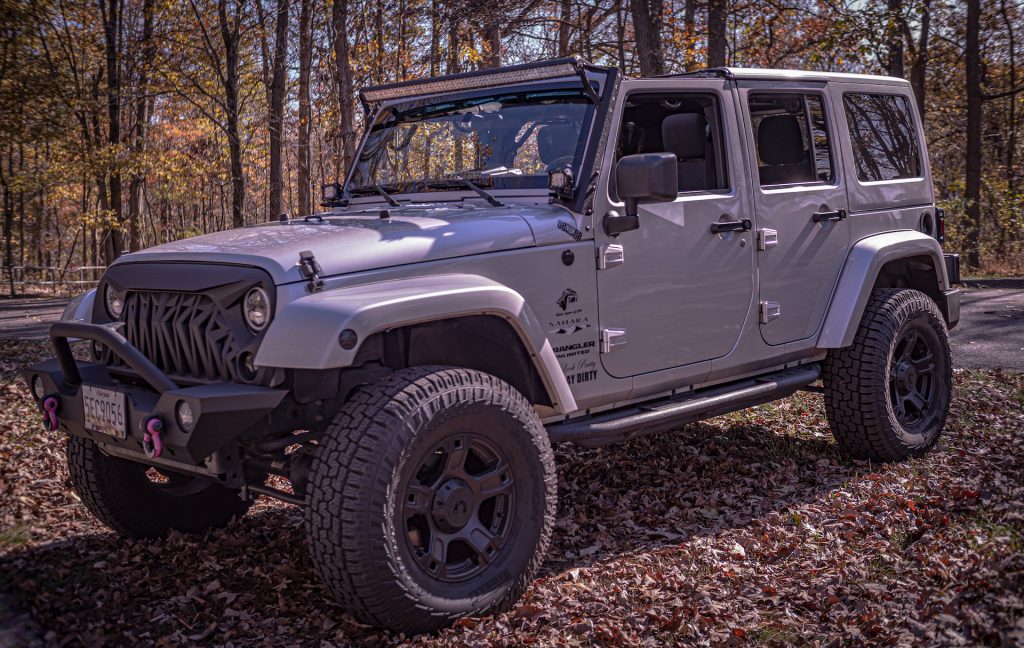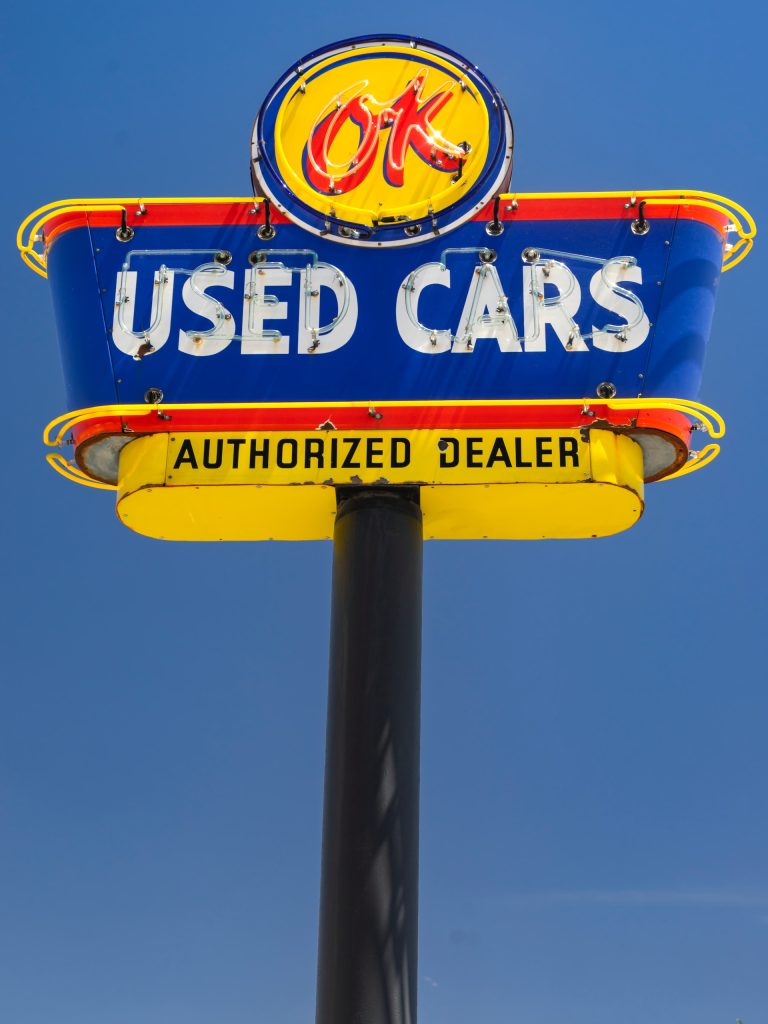Discover how the resale value of your car can impact the cost of your car insurance. Explore the top car models with high resale value, understand depreciation’s influence on insurance premiums, and learn about zero depreciation add-ons. This consumer guide empowers licensed drivers aged 20-60 to make informed decisions about car insurance.

Introduction
Car insurance is a crucial aspect of owning a vehicle, providing financial protection in case of accidents, theft, or damage. However, many drivers are unaware of how the resale value of their car can significantly affect their insurance premiums. In this comprehensive consumer guide, we will delve into the connection between resale value and car insurance costs. By exploring data from reputable sources, such as articles on car resale value and depreciation, we will equip licensed drivers aged 20-60 with the knowledge they need to navigate the complexities of car insurance.
The Importance of Resale Value in Car Insurance
Understanding the relationship between your car’s resale value and your insurance premiums is essential for managing the cost of coverage effectively. As highlighted in the article “How Depreciation Can Affect Your Auto Insurance Premiums,” insurance companies consider the value of your vehicle when determining premiums. A higher resale value implies a potentially higher payout in the event of a total loss, leading to increased insurance costs. On the other hand, a car with better resale value can result in lower premiums over time.
Top 10 Car Models with the Best Resale Value in 2023
To assist you in making informed decisions about your vehicle purchase, it is vital to consider the resale value of different car models. According to the article These 10 Used Cars Have Held Their Value the Most, the Jeep Wrangler, Jeep Wrangler Unlimited, and Porsche 911 have demonstrated the least depreciation over the last five years. By opting for car models that hold their value well, you can potentially enjoy lower insurance costs throughout your ownership.
Top 10 Cars That Hold Their Value The Most for 2023
| Rank | Model | Average 5-Year Depreciation |
|---|---|---|
| 1 | Jeep Wrangler | -7.3% |
| 2 | Jeep Wrangler Unlimited | -8.7% |
| 3 | Porsche 911 | -14.6% |
| 4 | Toyota Tacoma | -14.9% |
| 5 | Honda Civic | -16.3% |
| 6 | Subaru BRZ | -18.2% |
| 7 | Ford Mustang | -19.4% |
| 8 | Toyota Corolla | -19.8% |
| 9 | Nissan Versa | -19.9% |
| 10 | Chevrolet Camaro | -20.2% |
https://www.cnbc.com/2022/11/11/these-10-used-cars-have-held-their-value-the-most.html

Models with the Highest Rate of Return after Five Years
To further explore the impact of resale value on insurance costs, let’s analyze the car models that offer the highest rate of return after five years of ownership. Certain car models, such as the Porsche 911 and Toyota RAV4 Hybrid, have appreciated in value over the last three years. This appreciation can positively influence insurance premiums, as it indicates a higher value for potential payouts in case of a total loss.
| Rank | Model | 5 Year Residual Value |
|---|---|---|
| 1 | Nissan Frontier | 88.55% |
| 2 | Honda Accord | 88.00% |
| 3 | Toyota Tacoma | 87.58% |
| 4 | Subaru Forester | 87.09% |
| 5 | Ford F-250 Super Duty | 87.00% |
| 6 | Volkswagen Tiguan | 87.00% |
| 7 | Ford F-350 Super Duty | 86.95% |
| 8 | Ford F-150 | 86.75% |
| 9 | Mazda 3 | 86.13% |
| 10 | Honda Civic | 86.00% |
| 11 | Kia Rio | 86.00% |
| 12 | Honda Pilot | 85.95% |
| 13 | Mazda MX-5 Miata | 85.80% |
| 14 | Toyota Highlander | 85.77% |
| 15 | GMC Canyon | 85.33% |
| 16 | Nissan Versa | 85.03% |
| 17 | Toyota 4Runner | 85.00% |
| 18 | Toyota Prius | 85.00% |
| 19 | GMC Sierra 1500 | 84.80% |
| 20 | Subaru Legacy | 84.73% |
| 21 | Mitsubishi Mirage | 84.71% |
| 22 | Nissan Sentra | 84.30% |
| 23 | Volkswagen Jetta | 84.05% |
| 24 | Chevrolet Camaro | 84.00% |
| 25 | Chevrolet Colorado | 84.00% |
| 26 | Chevrolet Corvette | 84.00% |
| 27 | Chevrolet Express | 84.00% |
| 28 | Dodge Charger | 84.00% |
| 29 | Ram 2500 | 84.00% |
| 30 | Subaru Crosstrek | 84.00% |
| 31 | Toyota Sequoia | 83.74% |
| 32 | Honda Odyssey | 83.62% |
| 33 | Chevrolet Malibu | 83.40% |
| 34 | Ford F-450 Super Duty | 83.25% |
| 35 | Dodge Durango | 83.23% |
| 36 | Subaru Outback | 83.23% |
| 37 | Honda CR-V | 83.00% |
| 38 | Subaru Impreza | 83.00% |
| 39 | Toyota Camry | 83.00% |
| 40 | Mazda CX-5 | 82.69% |
| 41 | MINI Clubman | 82.22% |
| 42 | Chevrolet Traverse | 82.15% |
| 43 | Kia Sportage | 82.03% |
| 44 | Toyota Sienna | 82.00% |
| 45 | Ford Transit Connect | 81.91% |
| 46 | GMC Sierra 3500HD | 81.65% |
| 47 | Ram 3500 | 81.55% |
| 48 | Ram Promaster Cargo Van | 81.55% |
| 49 | Toyota Tundra | 81.35% |
| 50 | GMC Terrain | 81.00% |
| 51 | Hyundai Tucson | 81.00% |
| 52 | Kia Forte | 81.00% |
| 53 | Kia Soul | 81.00% |
| 54 | Toyota Corolla | 81.00% |
| 55 | Toyota RAV4 | 81.00% |
| 56 | Nissan Rogue | 80.98% |
| 57 | Hyundai Sonata | 80.19% |
| 58 | Chevrolet Silverado 1500 | 80.00% |
| 59 | Honda HR-V | 80.00% |
| 60 | Hyundai Elantra | 80.00% |
| 61 | Jeep Compass | 79.21% |
| 62 | Hyundai Accent | 79.00% |
| 63 | Jeep Wrangler | 78.91% |
| 64 | Ford Edge | 78.79% |
| 65 | Honda Ridgeline | 78.65% |
| 66 | Mazda CX-9 | 78.54% |
| 67 | Toyota Avalon | 78.50% |
| 68 | Chevrolet Silverado 3500HD | 78.40% |
| 69 | Mitsubishi Outlander Sport | 78.36% |
| 70 | GMC Acadia | 78.30% |
| 71 | Ford Mustang | 78.00% |
| 72 | Mitsubishi Outlander | 78.00% |
| 73 | Nissan Titan XD | 77.64% |
| 74 | Chevrolet Silverado 2500HD | 77.36% |
| 75 | Ford Explorer | 77.30% |
| 76 | Nissan GT-R | 77.00% |
| 77 | Chevrolet Trax | 76.90% |
| 78 | Chevrolet Equinox | 76.50% |
| 79 | Nissan Murano | 76.29% |
| 80 | Hyundai Santa Fe | 76.25% |
| 81 | Dodge Challenger | 76.00% |
| 82 | Ram 1500 | 75.60% |
| 83 | GMC Yukon | 75.31% |
| 84 | Nissan Maxima | 75.00% |
| 85 | Chevrolet Spark | 74.62% |
| 86 | Buick Encore | 74.26% |
| 87 | Chrysler 300 | 74.06% |
| 88 | Nissan Titan | 74.04% |
| 89 | Nissan Altima | 73.90% |
| 90 | Ford Expedition | 73.35% |
| 91 | Buick Enclave | 73.21% |
| 92 | Chevrolet Tahoe | 73.12% |
| 93 | Ford Escape | 73.00% |
| 94 | Jeep Grand Cherokee | 72.70% |
| 95 | Nissan LEAF | 72.55% |
| 96 | Kia Sorento | 72.48% |
| 97 | Jeep Cherokee | 72.28% |
| 98 | Chevrolet Suburban | 71.86% |
| 99 | GMC Sierra 2500HD | 71.30% |
| 100 | Nissan Armada | 68.80% |
| 101 | GMC Yukon XL | 68.38% |
https://caredge.com/ranks/depreciation
Automotive Brands with the Worst Rate of Return after Seven Years
At the Manufacturer brand level, the following brands have demonstrated the poorest rate of return over seven years.
| Rank | Brand | 7 Year Resale Value |
|---|---|---|
| 17 | Buick | 54.32% |
| 16 | Chrysler | 55.82% |
| 15 | Ford | 61.23% |
| 14 | Ram | 61.63% |
| 13 | Jeep | 63.05% |
| 12 | Mitsubishi | 63.09% |
| 11 | GMC | 63.66% |
| 10 | Dodge | 65.21% |
| 9 | Nissan | 65.26% |
| 8 | Chevrolet | 66.49% |
| 7 | Hyundai | 67.31% |
| 6 | Kia | 69.19% |
| 5 | Volkswagen | 70.48% |
| 4 | Mazda | 72.24% |
| 3 | Toyota | 72.54% |
| 2 | Subaru | 72.66% |
| 1 | Honda | 73.29% |
https://caredge.com/ranks/depreciation
How Depreciation Affects Your Auto Insurance Premiums
Understanding the impact of depreciation on your car’s value is essential when considering how it affects your insurance premiums. As mentioned earlier, cars generally depreciate in value over time, and the rate of depreciation can vary based on factors such as demand, economic trends, and current events. Let’s explore how depreciation can influence your insurance premiums and what steps you can take to protect yourself.
Insurance Premiums and Vehicle Value
When it comes to insurance premiums, certain areas of coverage are directly correlated to your car’s value. These areas include collision coverage and comprehensive coverage, which protect your vehicle against damages caused by accidents, theft, or other covered events. As your car’s value decreases due to depreciation, the potential payout by the insurance company in case of a total loss also decreases. Consequently, insurance rates for collision and comprehensive coverage should gradually reduce as your car depreciates.
However, many consumers are unaware of this relationship and may continue paying the same premium rate year after year, despite their car’s diminished value. Insurance companies often fail to adjust the rates automatically, resulting in potentially overpaying for coverage. To address this issue, it’s crucial to be proactive and ask your insurance provider about lower rates that account for depreciation if you plan to own the car for an extended period.
Replacement Insurance
Another way to protect yourself from the impact of depreciation is by purchasing replacement insurance. This type of coverage ensures that if your car is totaled, the insurance company will pay out the vehicle’s original value when purchased, rather than its depreciated value at the time of the accident. By opting for replacement insurance, you can bridge the gap between your car’s current value and the amount needed to replace it with a similar vehicle. This coverage can be particularly beneficial for new car owners who face the steepest depreciation in the initial years of ownership.
Buying Used Cars
If you’re concerned about depreciation’s impact on insurance premiums, buying a used car can be a smart choice. As mentioned earlier, the most rapid period of depreciation occurs immediately after a new vehicle’s purchase and in the first three years of ownership. By purchasing a used car, you avoid shouldering the heaviest loss in value experienced by the original owner. Used cars typically have a lower market value, leading to potentially lower insurance premiums.

The Role of Zero Depreciation Car Insurance Add-on
Understanding the concept of depreciation in car insurance is crucial for making informed decisions about your coverage. One way to mitigate the impact of depreciation is by opting for a Zero Depreciation Car Insurance Add-on. Let’s explore what this add-on entails and how it can help protect your financial interests in case of a claim.
What is Zero Depreciation Car Insurance Add-on?
The Zero Depreciation Car Insurance Add-on is an optional coverage available with Comprehensive car insurance policies. When you have this add-on, the insurance company considers the depreciation of your car as zero while calculating the claim amount. This means that in the event of damage or a total loss, you will receive a higher claim payout compared to a standard policy that accounts for depreciation.
How is Car Depreciation Calculated?
Car depreciation is calculated based on factors such as the car’s age and its Insured Declared Value (IDV). The IDV represents the market value of the vehicle for a specific policy period. The insurance company takes into account various car parts, including tires, tubes, nylon parts, batteries, airbags, fibreglass, and paint, to calculate the depreciation. However, glass parts are typically not considered for depreciation calculations.
Different Rates of Depreciation for Car Parts:
The rate of depreciation for car parts varies depending on the manufacturing year of the vehicle. This differentiation helps determine the claim amount in case a specific part is damaged. Generally, the depreciation rate for rubber, nylon, plastic, and battery parts is around 50%. For fibreglass parts, the depreciation rate is typically 30%. When it comes to wooden parts, the depreciation is calculated based on the car’s age. Notably, there is usually no depreciation on glass parts if they are damaged.
Depreciation Remedy: Zero Depreciation Add-on
Depreciation can significantly reduce the claim amount, causing inconvenience when you need financial support the most. To counteract this, purchasing a Zero Depreciation Add-on is a practical solution. By including this add-on in your insurance policy, you can ensure that depreciation is not a factor when settling claims. It is essential to note that most insurance companies offer the Zero Depreciation Add-on for new cars during the first five years of ownership. After this period, the policyholder is responsible for bearing the cost of depreciation.
Impact of Not Having the Zero Depreciation Add-on:
If you do not have the Zero Depreciation Add-on with your Comprehensive car insurance policy, the claim amount will be reduced. This means you will have to bear higher out-of-pocket expenses for repairs or replacements, as the insurance company will factor in depreciation while settling the claim. The absence of the Zero Depreciation Add-on can lead to a significant financial burden during unforeseen events.
Difference Between Zero Depreciation Car Insurance and Normal Car Insurance:
The primary difference between Zero Depreciation Car Insurance and normal car insurance lies in how the claim amount is calculated. In a normal car insurance policy, depreciation is considered when determining the claim payout. However, with Zero Depreciation Car Insurance, depreciation is not factored in, resulting in a higher claim amount.
Understanding Car Insurance Depreciation Value:
Car insurance depreciation value refers to the monetary value associated with the depreciation of a vehicle over time. This value increases annually and directly affects the claim amount you receive from the insurance company. It is essential to be aware of this value as it influences your financial recovery in case of a claim.
Car Insurance Depreciation Calculator:
While there is no specific car insurance depreciation calculator available for policyholders, you can use an Insured Declared Value (IDV) calculator as a reference. An IDV calculator helps determine the actual value of the car in terms of insurance coverage, considering factors like the car’s age and condition. Although it does not provide an exact depreciation calculation, it aids in understanding the value of your car and its impact on your coverage.
Importance of Insured Declared Value (IDV):
Insured Declared Value (IDV) plays a vital role in car insurance, especially in the case of extreme damage or total loss. It represents the market value of the vehicle and determines the maximum claim amount that the insurance company will settle. Understanding the IDV is crucial for ensuring that your coverage aligns with your car’s value and financial needs.
Incorporating the Zero Depreciation Car Insurance Add-on can help protect your financial interests by eliminating the impact of depreciation on claim settlements. Depreciation, influenced by factors such as car age, affects the claim amount you receive from the insurance company. By being aware of these aspects and making informed decisions about your coverage, you can safeguard yourself against unnecessary financial burdens and ensure adequate protection for your car.
The Significance of Insured Declared Value (IDV) in Car Insurance
How to Recover Depreciation on Auto Insurance Claims
Filing a car insurance claim can be a complex process, and one of the common challenges that policyholders face is understanding how to recover depreciation on their claims. It is widely known that cars depreciate in value as soon as they are driven off the lot and over time. However, when it comes to filing an insurance claim, this depreciation can become a point of contention with the insurance company. So, how can you recover the depreciation on your auto insurance claim? Let’s explore the process.
Understanding Recoverable Depreciation
Depreciation in the context of auto insurance is often referred to as a diminished value claim. This type of claim allows you to seek compensation for the loss in value your car has suffered after being involved in an accident. If your car has undergone repairs but is still significantly less valuable as a result, you have the right to pursue compensation for this depreciation.
To initiate the process of recovering depreciation on your auto insurance claim, you will need to open a diminished value claim. This claim focuses on the difference between your car’s value before the accident and its value after the accident. If the accident was caused by another person’s negligence, you would file a claim against that driver’s insurance policy. However, if you believe that the accident itself has negatively impacted the market value of your car, you may also need to pursue a diminished value claim with the at-fault driver’s insurance company.
Types of Diminished Value Claims
- Immediate Diminished Value: This type of claim involves calculating the resale value immediately after your vehicle has been involved in an accident but before any repairs have been made. Since most vehicles undergo repairs following an accident, this claim is rarely used. However, it is still an option to consider in specific circumstances.
- Repair Related Diminished Value: If your mechanic provides insufficient or improper repairs or uses low-quality parts, you can initiate a claim for repair-related diminished value. This claim assumes that your vehicle cannot be restored to its initial condition. It is crucial, especially for luxury car owners, to ensure that the mechanic uses exact parts from the car’s manufacturer to replace any damages. The use of generic parts can significantly diminish the value of your vehicle.
- Inherent Diminished Value: This is the most common type of diminished value claim. It focuses on the market value of your car after it has been repaired following an accident. Even if the repairs are done excellently, the presence of an accident in your car’s history lowers its worth for potential buyers. In today’s market, where people often check accident history reports, inherent diminished value claims have significant implications.
Recovering depreciation on your auto insurance claim can help you recoup some of the financial losses associated with the diminished value of your vehicle. By understanding the different types of diminished value claims and their significance, you can navigate the process more effectively and seek fair compensation for the decrease in your car’s value caused by an accident.
Remember to consult with your insurance provider and gather the necessary evidence, such as repair records and market value assessments, to support your diminished value claim. This will strengthen your case and increase your chances of recovering the depreciation amount.
If you believe that your car’s value has decreased as a result of an accident, you have the right to pursue a diminished value claim. By understanding the nuances of the different types of diminished value claims and working closely with your insurance company, you can recover the depreciation amount and receive fair compensation for the diminished value of your vehicle.
Factors Affecting Resale Value and Insurance Premiums
Several factors impact both the resale value of your car and your insurance premiums. As discussed in the articles “These 10 Used Cars Have Held Their Value the Most” and “How Depreciation Can Affect Your Auto Insurance Premiums,” factors such as the make and model of your vehicle, age, kilometers driven, maintenance, and safety features influence both resale value and insurance premiums. By choosing a car with better resale value and considering these factors, you can potentially lower your insurance costs.
Tips for Maximizing Resale Value and Minimizing Insurance Costs
To maximize the resale value of your car and minimize insurance expenses, consider implementing the following tips:
|
Summary: Making Informed Decisions About Car Insurance
Understanding the connection between your car’s resale value and your insurance costs is vital for licensed drivers. By considering the best car models with high resale value, comprehending depreciation, and exploring zero depreciation add-ons, you can optimize your insurance coverage while minimizing costs. Remember to factor in the various elements that influence resale value and insurance premiums when making decisions about your coverage. By staying informed and proactive, you can protect your investment and ensure affordable and comprehensive car insurance coverage.
In conclusion, the resale value of your car significantly impacts the cost of your car insurance. By considering car models with high resale value, understanding depreciation and its effect on premiums, and exploring zero depreciation add-ons, you can make informed decisions that protect your investment and minimize insurance costs. With the knowledge gained from this comprehensive consumer guide, you can confidently navigate the complexities of car insurance and secure the coverage that best suits your needs. We’ve been helping divers find the best cheap insurance, with the options you need to protect your property and family.


